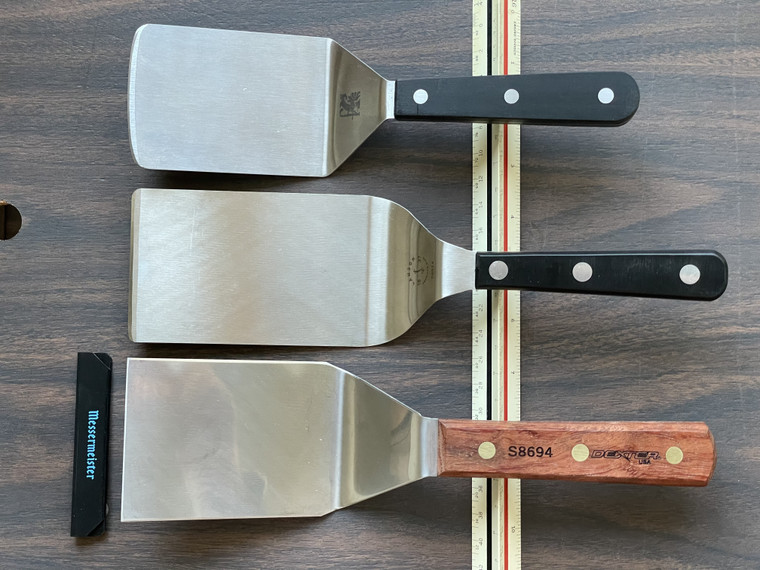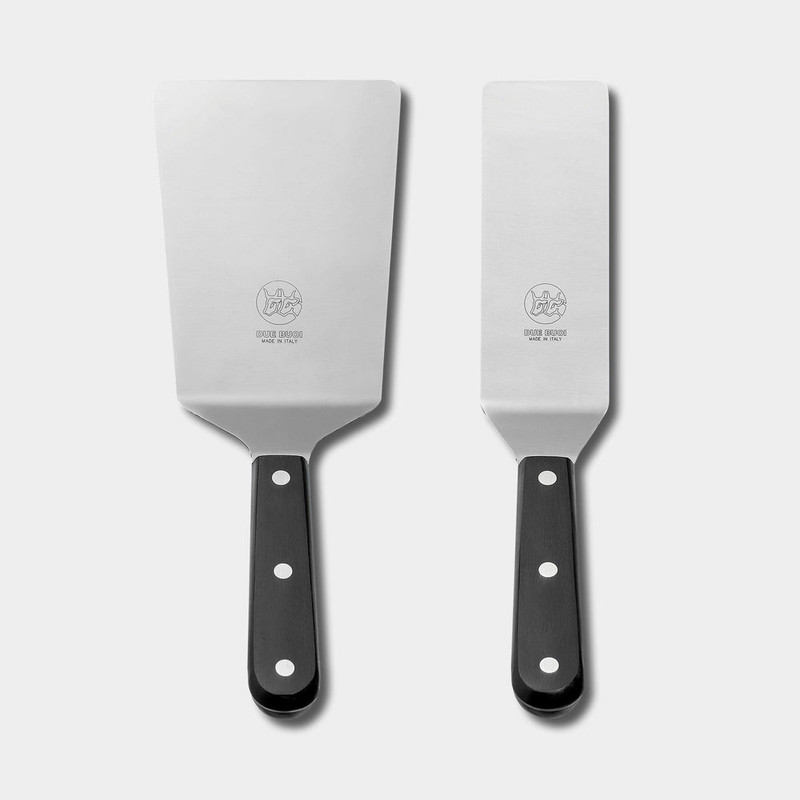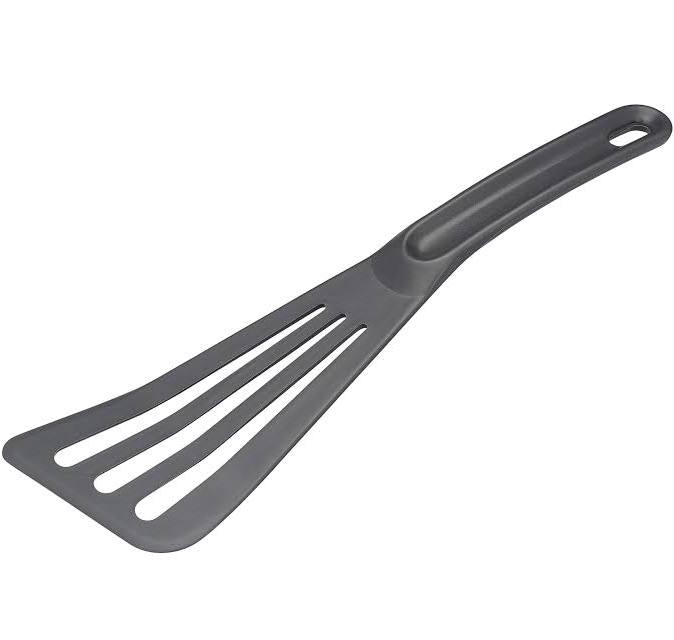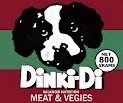Go  | New  | Find  | Notify  | Tools  | Reply  |  |
| Fire begets Fire |
Details man! "Pacifism is a shifty doctrine under which a man accepts the benefits of the social group without being willing to pay - and claims a halo for his dishonesty." ~Robert A. Heinlein | |||
|
| 186,000 miles per second. It's the law. |
] Good point. I guess if I had to pull three to live with for the rest of my life, I would choose 3-4 inch paring, 6 inch utility, and 8 inch chefs. Thats all I really need. | |||
|
| Member |
Aside from Steak knives which I use almost daily. I use a Santoku 98% of the time, once in a while a pairing or bread knife, and a serrated 5" utility knife......rarely use anything else.......It is nice to have a nice filet/boning knife for carving that turkey once a year. LOL | |||
|
Baroque Bloke |
SIGforum is an educational institution. I’d never known of the nakiri knife, but after seeing several mentions in this thread I investigated. “Dang! Just what I need,” I said to myself. I can’t remember the last time I needed the sharp point on my chef’s knife. So I bought a Syosaku brand nakiri knife with 6.3” blade. And I popped for the optional “saya” (magnoila wood sheath). I don’t use knife blocks – don’t want to give the counter top space. Instead I make sheaths from thin, dense cardboard and keep my kitchen knives in a drawer right below the counter where I’m most likely to need them. The “saya” will save me that little task. My chef’s knife is destined for Goodwill. Serious about crackers. | |||
|
| Member |
Most kitchens can do pretty much everything with x3. Large Chef, Mid or small pairing, and a good bread knife. Heck I could do pretty much %99 of everything with a good bread knife (It cuts other stuff beside bread just fine) and a mid/small pairing. Train how you intend to Fight Remember - Training is not sparring. Sparring is not fighting. Fighting is not combat. | |||
|
| Member |
In the Japanese kitchen knife tradition, the nakiri is really a specialized knife rather than a general purpose one. In the context of typical Japanese knife technique, it is designed to be the best possible knife for fast, accurate veggie prep (slicing, dicing, julienning, etc.). Besides the obvious almost-straight edge and almost-rectangular blade shape, a typical nakiri will also have a thinner blade and finer edge than a chef knife. This thinness and the balance of the blade profile makes the nakiri particularly suited to making "push cuts" (pushing the knife straight down through what is being cut with no rocking or slicing motion) on veggies. With a little practice, doing veggie prep using push cuts with a nakiri is so, so fast and easy. Everyone uses a knife differently, and there's certainly nothing wrong with using a nakiri as a general purpose kitchen knife. I've used a nakiri for not-veggie-prep quite often when I've been using one already and don't want to get another knife dirty. Personally, I almost never use the point of a chef knife for anything, either. I do sometimes use the last couple inches of blade, mostly when I want to only cut something part of its length (like dicing an onion by leaving all the strips attached to the root nub), but that doesn't require a point. For me, the biggest drawback of a nakiri as a general purpose knife is that sometimes I need a longer knife to cut things in one go (e.g., halving melons or squash). Also, occasionally I want an edge with some curve or "belly" for slicing or rocking cuts, although that's pretty much a non-issue for me. My favorite chef knife has a very straight edge profile. There are a few things that a nakiri is really not well-suited to, like cutting up a whole chicken or deboning a piece of meat. I can easily imagine a nakiri being my most-used knife, but can't imagine being happy with it as my only knife the way I can with a chef knife. Also, from the factory, a nakiri will often be sharpened with a finer angle and have a more delicate edge than a chef knife, although that can easily be changed. The santoku is a somewhat similar (in that it has a straighter edge than western chef knives and isn't very pointy) general purpose knife that was invented in the 1940s for Japanese home cooks that didn't want to have a bunch of different, expensive knives. It was intended to replace the gyuto (similar to a western chef knife), the nakiri, and the deba (which sort of looks like a western chef knife with a SUPER thick blade - 1/4" to 3/8" is typical - and is used for breaking down whole fish). The santoku is the most popular primary knife in home kitchens in Japan. | |||
|
Fighting the good fight |
I very occasionally do, when breaking down whole chickens and turkeys. You sometimes need that point. As noted, the chef's knife is the more universal knife, usable in more situations than a nakiri. But in my opinion, the nakiri is better at the most common kitchen tasks than a traditional chef's knife.
Yeah, it's uncommon to find a Nakiri over ~7". But there's a very similar type of knife, a Negikiri, that I've seen up to 15" online.  However, one of the best parts of a Nakiri is the lightness and balance, and I can't imagine a 10"+ Negikiri would feel the same. | |||
|
Lost |
Indeed, the word nakiri means "vegetable cutter." | |||
|
| Member |
My counter space is limited so a block makes no sense thus, my knives are in sheaths...combination of plastic and cardboard. Restaurants don't use blocks, beside health code restrictions, they take-up workspace. Blocks got marketed hard by knife brands pushing the wedding registry and home improvement industries.
There's always a need for a second chef's knife or, general purpose knife. | |||
|
| Member |
Bread knife, paring, steak knife, chef's knife. Right now I am using a butchers knife until I get a good chef's knife And a butter or spreading knife Safety, Situational Awareness and proficiency. Neck Ties, Hats and ammo brass, Never ,ever touch'em w/o asking first | |||
|
Spread the Disease |
I mostly use my Chinese cleaver after I finally got one and realized how versatile it is. I’ll switch to a thinner chef knife for trimming meat off bones. A serrated bread knife is here, too. ________________________________________ -- Fear is the mind-killer. Fear is the little-death that brings total obliteration. I will face my fear. I will permit it to pass over me and through me. And when it has gone past me I will turn the inner eye to see its path. Where the fear has gone there will be nothing. Only I will remain. -- | |||
|
Baroque Bloke |
It just occurred to me that one essential kitchen knife type hasn’t received a single mention in this thread: the spatula. What? You say that a spatula isn’t a knife? Well, a spatula comprises a haft and a sharp steel blade. In my book that’s a knife. I’m talking griddle spatula, not a fish turner. I have several of ‘em:  Top to bottom: Sabatier 4Lx2.75W” blade (China) Lamson 5Lx3W” blade (USA) Dexter 4Lx3W” blade (USA) The Sabatier was my first spatula. It’s very compact, and very stiff – both virtues in my book. But I discovered that its curved edge makes it a poor tool for scraping my smash burger patty off my griddle with the delish browned bottom surface intact. If that front edge had been straight I’d’ve looked no further. But it wasn’t. So I bought the Lamson, which has a perfectly straight edge. Its material and craftsmanship are first rate. But there’s a hitch – it lacks stiffness. The reason is plain: its blade is narrow for about an inch beyond the haft, and that narrow segment flexes too easily. When I apply downward force to scrape my smash burger off the blade flexes and bottoms-out on my griddle. What were they thinking? So I bought the Dexter-Russell. Like the Lamson it has a perfectly straight edge and its material and craftsmanship are first rate. And, by George, this hunky spatula is stiff enough to clean smash burger patties off my griddle. Cleans ‘em off good. The thickness of its full-tang blade appears to be constant through the length of its 5” haft and down the dog leg. But the thickness progressively diminishes along the flat part of the blade. From ~0.055” near the heel to ~0.023” near the front edge. That thinness makes it easier to get the blade under stuff. And makes it easier to keep the edge sharp with my bench stones. It’s sharp enough that I bought an edge guard for it (see photo). This Dexter is the Real Deal – I won’t need another spatula. Dexter also makes a narrower (4Lx2.5W” blade) spatula. I have no experience with that model but member Hobbs has one and likes it quite a lot: https://sigforum.com/eve/forum...250070084#8250070084 Serious about crackers. | |||
|
| Member |
I have full block set of 2 Man Zwillings. Of those I use 4 knives regularly. 8” Chef 4’ paring 5” utility Bread knife - don’t know the length I also use my ProTech TRR-3 in the kitchen as well if the knife I reach for isn’t in the block. I can’t be the only one who uses an EDC blade in the kitchen. + | |||
|
thin skin can't win |
"need" Applies here the same as it does to guns. You only have integrity once. - imprezaguy02 | |||
|
| Member |
I purchased a set of hand made kitchen knives from our own MRW a few years ago. Been more than pleased with them. I will admit I rarely find use for a paring knife. I need to contact MRW about getting them resharpened. My next one will be a Serbian chef chopper/cleaver. I also have a Victoronix granton edge slicer that sees a lot of brisket slicing duty. Great knife at a decent price point. This is the set MRW made for me.  "Fixed fortifications are monuments to mans stupidity" - George S. Patton | |||
|
| Member |
I have quite a few, but I use an 8" Wusthof chef's knife and two Victorinox stamped boning knives (one wide and one narrow) for 95% of what I do, and I could use them for the other 5% if I had to. A paring knife is also useful but I don't find it to be essential. After years of buying and using many knives I would suggest buying one really good workhorse knife that does what you do most often well and comfortably. Something like a chef's knife or Japanese equivalent. I like boning knives for breaking down cuts of meat, but you don't need an expensive knife to do that -- in fact, I think the very thin stamped blades work better and I don't mind replacing them every 5-7 years when they are worn out. | |||
|
Go Vols! |
For my own update, the Zwilling Pro 5.5” prep knife and the rocking Santoku have become the most used in the set. I’ll probably asking about a good means of sharpening them soon that is quick yet does not wear them excessively. | |||
|
| Member |
Pairing knives are one of three essential knife types for the kitchen; if you cook regularly and often, pairing knives will get used. Contrary to what the home stores offer, pairing knives should be cheap, no need for a full tang or, exotic handle, stamped steel blade is perfectly fine. The inexpensive Khun Rikon knives, offered in a variety of colors around $9.99 are perfect. Get a couple of them and put them to work. Traditional French paring knives are cheap, wood handled using stamped steel, invest your money into a good Chef and Bread knife. | |||
|
| Member |
By this definition, my favorite spatulas are Due Buoi, which are made in Italy. They come in a number of shapes and sizes. Due Buoi also makes knives, but I’ve never tried them.  I actually use a Matfer polymer fish spatula more than anything else, but it doesn’t meet your definition.  | |||
|
"Member" |
There's clean and dirty. So just one type? | |||
|
| Powered by Social Strata | Page 1 2 3 4 |
| Please Wait. Your request is being processed... |
|
© SIGforum 2025